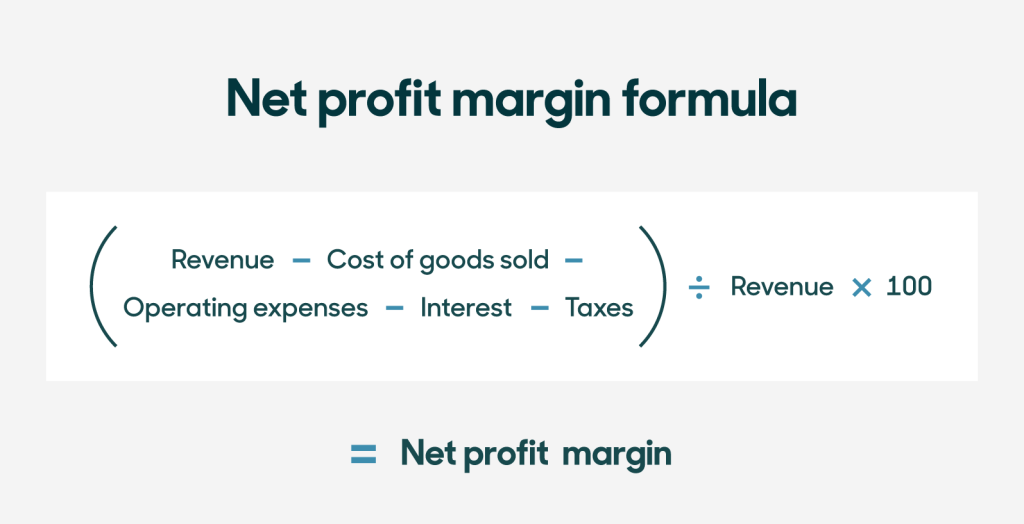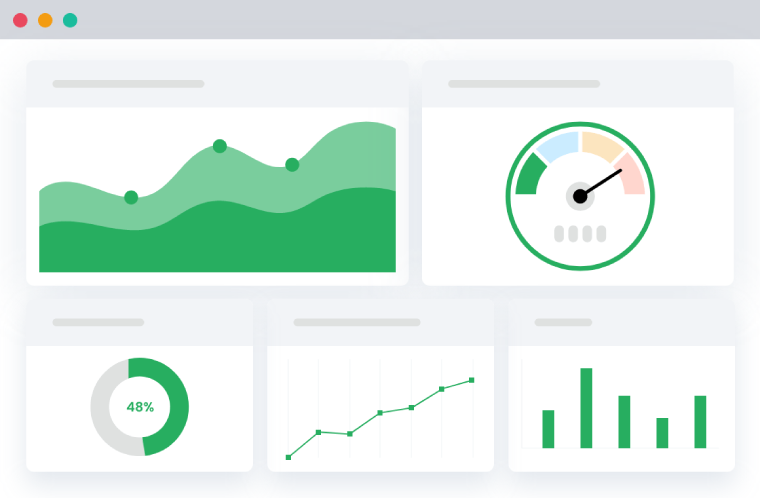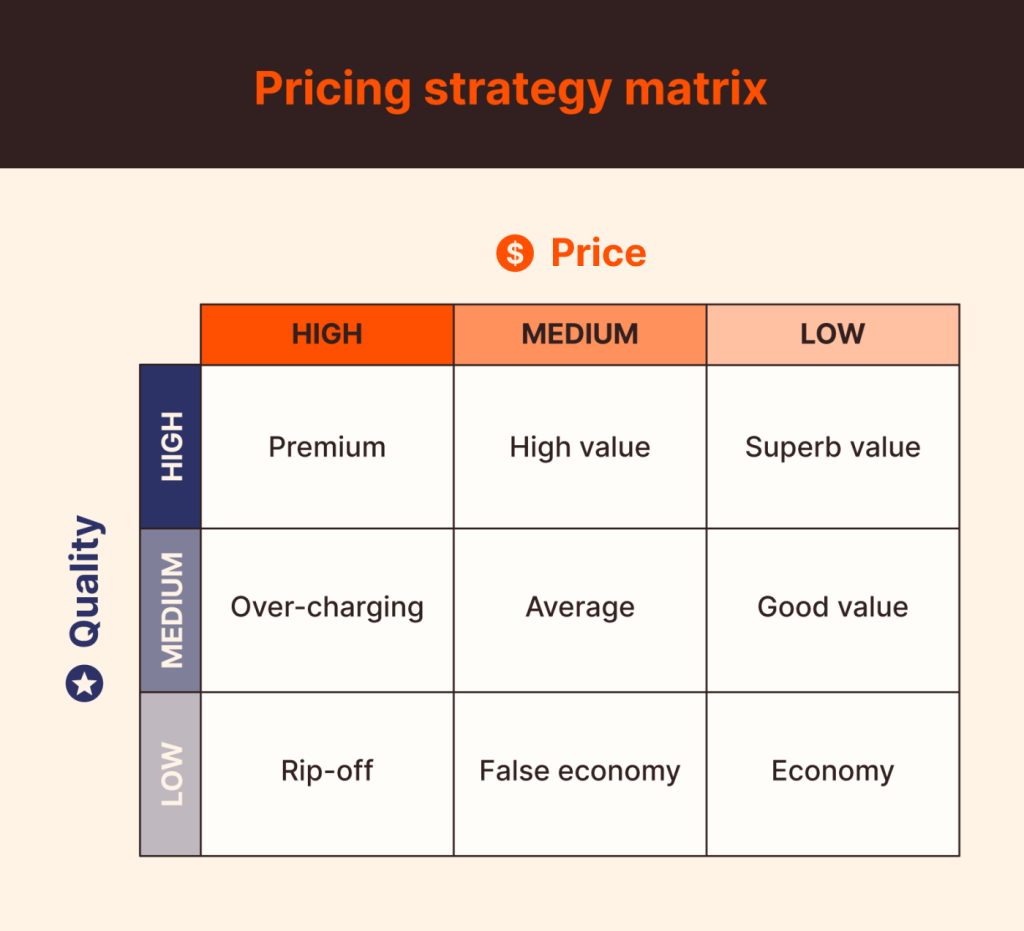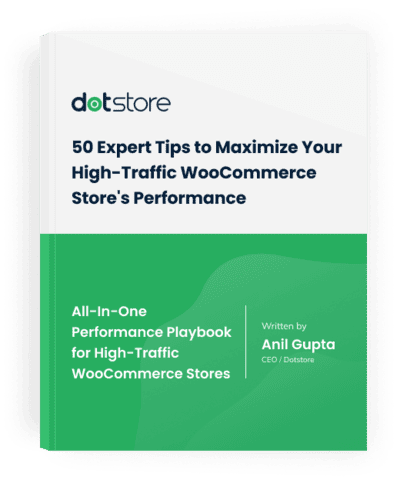Table of Contents
Jumping into the e-commerce game with your WooCommerce business? Awesome! But let’s first get cozy with two vital financial pals: profit margin vs revenue. These two bigwigs are essential for understanding the health of your business and making savvy decisions.
Profit margin is like a sneak peek into your business’s efficiency. It shows the percentage of your hard-earned revenue remaining after covering all costs, expenses, and those pesky taxes. Revenue, often called the ‘top line’, is the total cash influx from selling your products and services.
At first glance, these terms may seem daunting, but trust me, they’re the heart and soul of e-commerce management. Embracing them and learning how they cooperate unlocks your business’s decision-making potential. You’ll gain insights into setting spot-on prices, managing expenses, and crafting winning strategies.
So let’s dive in and make friends with these key concepts! Once you do, you’ll be well-equipped to steer your WooCommerce store toward decisions that fuel growth and success. Remember, a strong grasp of profit margin and revenue will make all the difference in solidifying your business’s future.
Why Knowing Profit Margin vs Revenue is Important for an Ecommerce Store?
Understanding the difference between profit margin and revenue is not merely an accounting exercise – it directly impacts the health and long-term viability of your eCommerce business. They’re critical financial metrics that allow you to measure your store’s performance, identify any operational inefficiencies, direct costs, manage risks, and attract investors.
Firstly, revenue and profit margin form the bedrock of strategic decision-making for your online store. Your revenue gives you an idea of the total earnings, reflecting the success of your marketing efforts and the resonance of your offerings with customers.
However, it’s your profit margin that highlights how much of these earnings translate into actual profits after accounting for all the overheads. This understanding of operating gross margin aids in accurately pricing products, controlling expenditures, and making projections about future profitability.

Secondly, a forensic understanding of these metrics helps pinpoint operational efficiency or the lack thereof. A rampant issue among many businesses is high operating costs, which often go unnoticed in the face of substantial revenue. However, dissecting your profit margin can bring these hidden inefficiencies to light, providing an opportunity for cost reduction, strategic budget allocation, or even a justified price increase.
Lastly, profit margin and revenue play a critical role in risk management and investor relations. An understanding of these metrics can help you foresee how much downturn in sales your business can sustain before incurring losses, vital for preparing contingency plans.
Moreover, when seeking investments, a healthy operating profit margin and substantial revenue are the key cards to play. They indicate market demand for your products, efficient management, and the likelihood of a return on investment.
Understanding Profit Margin
Profit margin is a pivotal financial concept that reflects a company’s profitability. It is typically expressed as a percentage, signaling the proportion of revenue that remains as profit after all costs and expenses are accounted for.
Calculating profit margin is quite straightforward. Simply subtract your total costs from your total sales revenue and divide this value by your total sales revenue. The result, when multiplied by 100, gives you your profit margin percentage.

For example, if your e-commerce store generated $100,000 in sales and had costs amounting to $60,000, your profit margin would be 40%.
Understanding and monitoring profit margin is extraordinarily crucial for your WooCommerce business because it provides insights into your business’ efficiency. High-profit margins indicate that your operation is well run and that your products are priced appropriately.
Conversely, low profit margins might highlight the need for tweaks and improvements, either in pricing, cost control, or operations.
Understanding Revenue
Revenue refers to the total income generated by a business through the sale of its products and/or services before any costs or expenses are deducted. This concept is pretty straightforward and vital to any WooCommerce operation because it is fundamentally the lifeblood of a company and your business.

Calculating revenue involves summing up all the money generated from selling your goods or services. For instance, if your WooCommerce store sold 500 products at $20 each, your total revenue would be $10,000.
Revenue is a crucial performance indicator for WooCommerce businesses because it helps determine growth rates and compare performance across different periods. It also assists in tracking the effectiveness of marketing and sales strategies, providing valuable insight into which approaches drive the most sales.
However, while revenue might seem like the ultimate goal, it is crucial to remember that revenue doesn’t equate profitability. Thus, focusing solely on revenue can often result in overlooking crucial cost factors, underscoring the need to consider both revenue and profit margins when analyzing your WooCommerce business’s financial health.
Enhanced Ecommerce Tracking
Leverage the power of analytics to boost your store’s performance and maximize profits.
14-day, no-questions-asked money-back guarantee.

Strategies to Optimize Profit Margin and Revenue in WooCommerce
Business success in WooCommerce isn’t solely dependent on offering quality products or services; it also greatly rests on strategic financial management. Optimizing profit margins and revenue is vital to propelling a prosperous WooCommerce business. Adopting sound financial strategies can help you maximize profitability and ensure long-term sustainability. Here are some powerful strategies you can employ.
1. Proper Pricing Strategy
Pricing reflects the value you are providing to your customers and, as such, plays a central role in determining both profit margins and revenue.

Poor pricing strategies can lead to reduced margins, whereas overpricing might result in lost sales. Thus, it is critical to determine a pricing strategy that accurately reflects the value of your offerings, considers the price elasticity of your goods or services, and aligns with your target market’s expectations and buying power.
Adopting competitive pricing, implementing value-based pricing, or following a cost-plus pricing model are some strategies to consider. Remember, pricing can always be adjusted according to business needs, market trends, and customer responses.
2. Cost-effective Shipping and Handling
With the increasing expectation for free or low-cost shipping among online shoppers, finding cost-effective shipping and handling solutions is equally crucial to maintaining high-profit margins.
Many e-commerce businesses struggle with shipping costs, often providing free shipping services that eat into their profit margins. By negotiating with multiple carriers for better rates, implementing a minimum order value for free shipping, or charging real-time carrier rates, you can better manage your shipping costs.

Moreover, optimizing your packaging process can also help reduce handling costs. For instance, using appropriate packaging that minimizes weight and volume can lower shipping costs and improve efficiency.
3. Discounts and Promotions
While discounts and promotions might seem counterintuitive when trying to increase profit margins, they can indeed be quite powerful if wielded properly.
Seasonal discounts, bulk purchase discounts, or first-time customer discounts can significantly boost sales, driving an increase in revenue and overall profitability. Furthermore, promotions often result in increased traffic to your WooCommerce store, enhancing brand visibility and potentially securing more customers.

However, it’s critical to ensure that discounts are carefully calculated to prevent eroding your profit margins. Ensure that even with discounts, your prices cover costs and still offer a reasonable profit.
4. Upselling, Cross-selling, and Bundling Strategies
Upselling (encouraging the purchase of a more expensive item) and cross-selling (suggesting related or complementary products) are effective strategies for increasing average order value.
Bundling, offering several products for sale as one combined product, is another strategy that can lower shipping costs, move older inventory, and rise revenue. By tactfully implementing these strategies, you can maximize both revenue and profit margins without necessarily having to secure new customers.
5. Efficient Inventory Management
Lastly, efficient inventory management can significantly enhance your WooCommerce business’s profitability. Overstocking can tie up cash and lead to storage problems, while understocking can lead to lost sales and unhappy customers.
By implementing an efficient and responsive inventory management system, utilizing just-in-time inventory practices, and constantly monitoring and adjusting inventory levels based on sales numbers, you can significantly reduce costs and enhance your profit margin.
Remember, the ultimate goal is to balance the act – greater revenue does not always mean higher profit margins. Therefore, apply these strategies carefully, always keeping an eye on both your net revenue and profit margin values.
Common Mistakes in Managing Profit Margin and Revenue
Even with the best strategies and tools, it’s easy to stumble upon common pitfalls that can affect your profit margin and revenue. Awareness about these mistakes can help you steer clear of them.
1. Overemphasis on Revenue
While generating high revenue is important, focusing solely on revenue can lead to overlooking essential cost factors. In extreme situations, an increase in revenue might come with paltry or even negative profit margins if costs are not managed.
Balance is key — always aim to grow your revenue while maintaining or increasing your profit margin.
2. Inefficient Inventory Management
Poor inventory management can lead to unnecessary storage costs or lost sales opportunities. Always ensure that you have a real-time understanding of your inventory levels and align your stocking with your sales.
3. Ignoring Shipping and Handling Costs
Many retailers absorb shipping and handling costs in a bid to attract customers, eating into their profit margins. Finding a shipping strategy that doesn’t inflate product prices or erode profit margins is paramount.
4. Inadequate Tracking
Finally, some businesses lack a robust system to track their progress on revenue and profit margin. Using a tool like Enhanced Ecommerce Google Analytics for WooCommerce can help you get real-time insights into your financial standing.
Conclusion
Understanding and balancing profit margins with revenue is a delicate yet necessary process in running a successful eCommerce business. As we’ve explored, various strategies can aid in this balancing act, including adopting proper pricing, streamlining shipping and handling, implementing a robust inventory management system, and leveraging the Enhanced Ecommerce Google Analytics plugin for insightful tracking.
Key to this process is having an acute awareness of the distinctive aspects and roles of both profit margin and revenue.
Remember, revenue shows the total of net sales amount, but profit margin uncovers how much of that revenue translates into actual profit. Utilizing these blended insights allows you to master the ebb and flow of your business finances, leading to sustainable, long-term success. By avoiding common pitfalls and learning from successful case studies, you can navigate towards improved profitability and growth.
FAQs
What is a good profit margin for eCommerce?
A good profit margin for eCommerce varies depending on various factors like the business model, industry, and location. However, according to data from NYU Stern School of Business, the average net profit margin for e-commerce businesses is around 5-20%. Keep in mind, a good profit margin is one that covers all your costs, allows for reinvestment into the business, and still leaves a sufficient amount for the business owners.
What is better revenue or profit margin?
Neither revenue nor profit margin is inherently ‘better’ than the other; they serve different purposes and should be considered together. Revenue shows the total amount of money earned from sales, and increasing revenue is a vital goal for businesses. On the other hand, profit margin represents what portion of the sales contributes to earnings after all expenses have been deducted. A high revenue business with low profit margin can be less profitable than a lower revenue business with a higher profit margin. Balancing revenue growth with a healthy profit margin is an essential aspect of sustainable business growth.
What is the difference between revenue and profit in eCommerce?
In eCommerce, revenue refers to the total amount of money generated from the sales of goods and services. It’s the gross or net income statement that a business earns before any costs or expenses are deducted. On the other hand, profit is what remains after all business expenses are subtracted from revenue. Expenses can include the cost of goods sold, operating expenses, taxes, and more.
Is 70 percent profit margin good?
A 70% profit margin is unusually high for most sectors, including eCommerce, and could indicate extremely high pricing or remarkably low cost of goods sold. However, it’s also crucial to understand whether this refers to calculate gross profit margin or net profit margin. A 70% gross profit margin might be feasible in certain businesses where the cost of goods sold is low relative to the selling price, but maintaining a 70% net profit margin (after considering all costs and expenses) is unlikely.
What is the rule of 40 in eCommerce?
The Rule of 40 is a metric and benchmark in high-growth SaaS and tech businesses, including certain eCommerce businesses. The rule suggests that a healthy business should have a combined growth rate and profit margin that exceeds 40%. For instance, if a company’s growth rate (revenue increase year-over-year) is 30%, then its profit margins should be at least 10%. The rule thus serves as a guide to balance growth (revenue increases) and profitability (keeping costs under control).
Enhanced Ecommerce Tracking
Leverage the power of analytics to boost your store’s performance and maximize profits.
14-day, no-questions-asked money-back guarantee.

